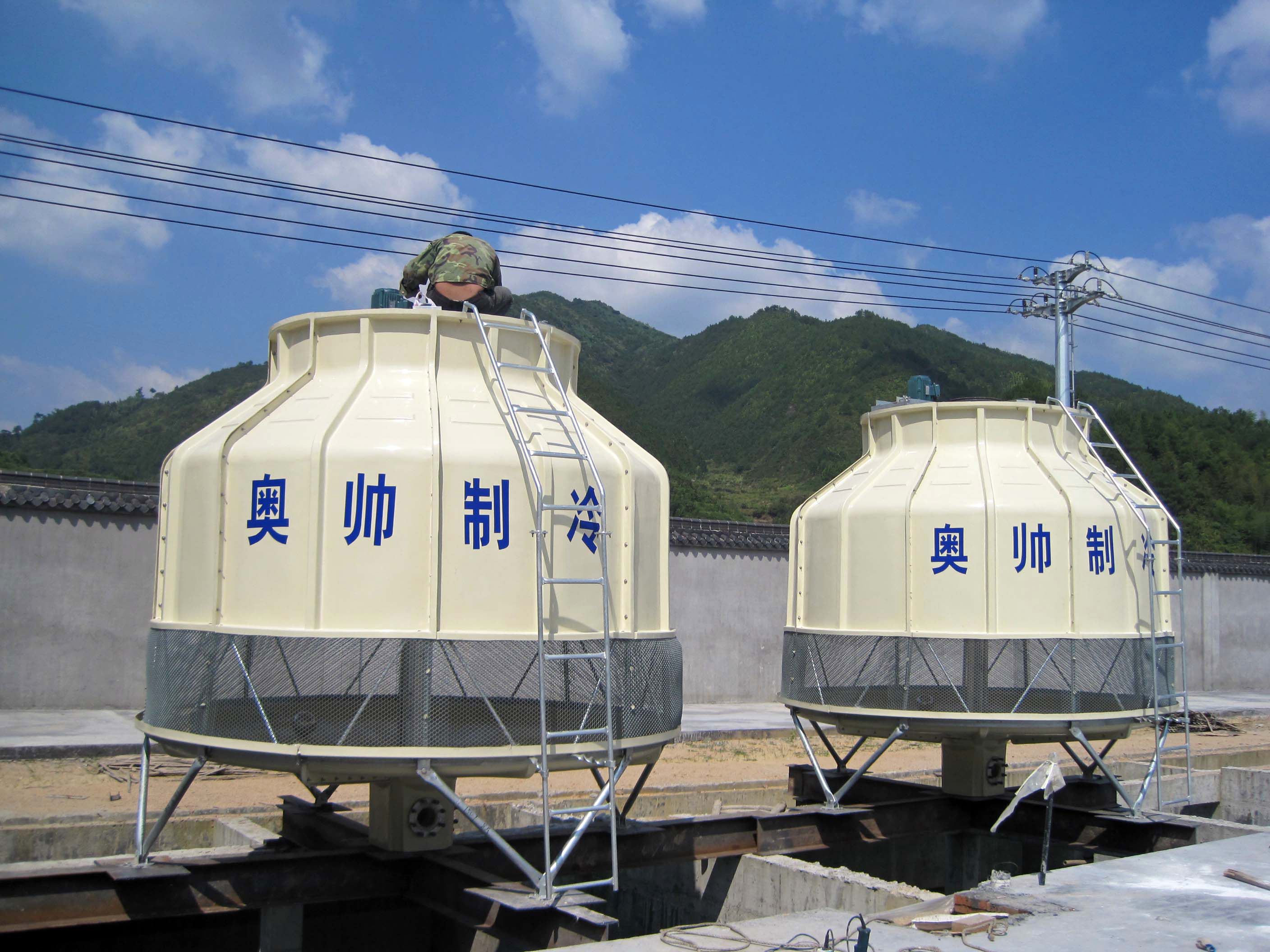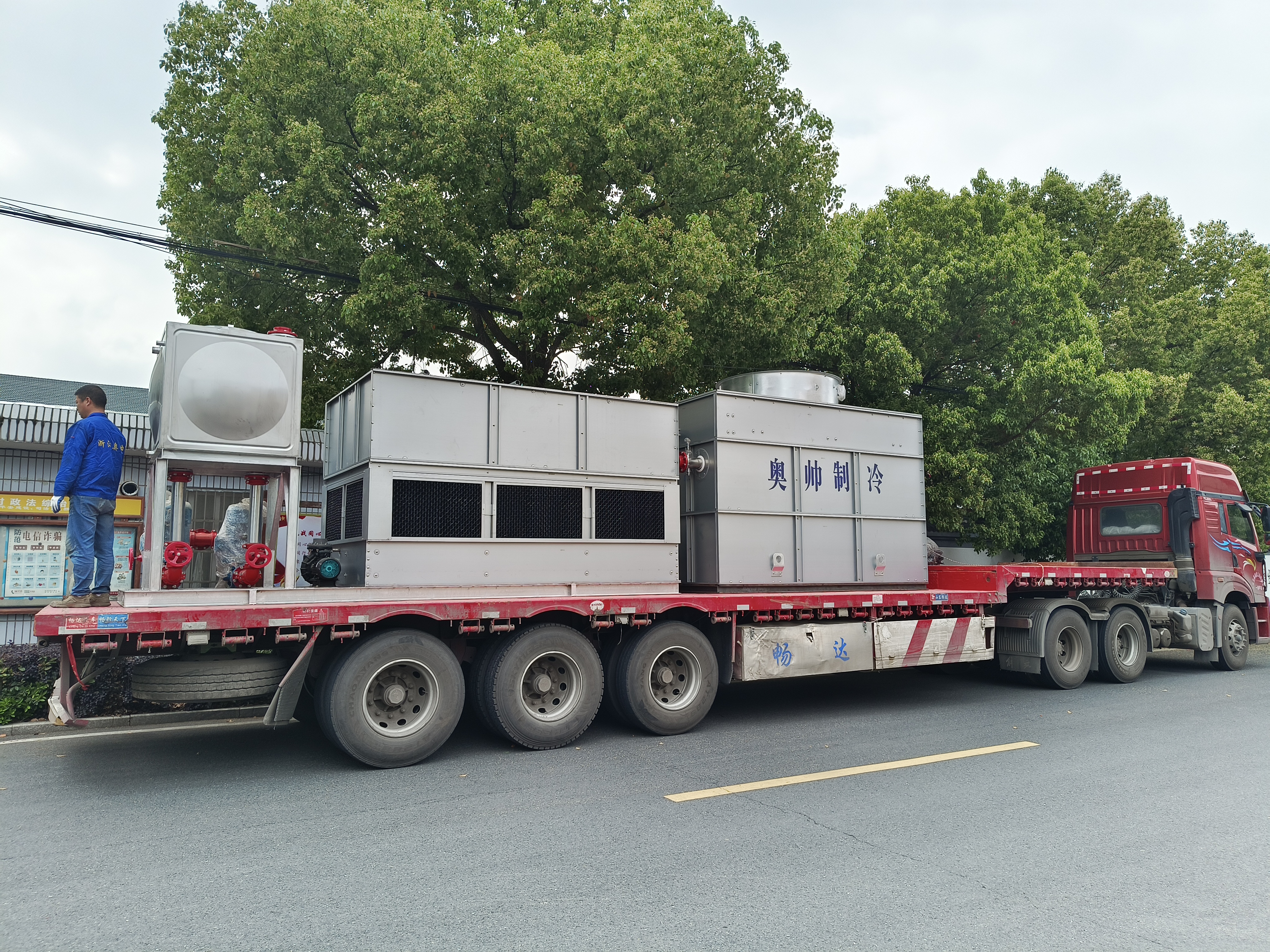We Provide Cooling Tower Solution
English
Please Choose Your Language
Views: 0 Author: Site Editor Publish Time: 2025-10-21 Origin: Site








Dry and low-enthalpy air, driven by the fan, enters the interior of the cooling tower through the air intake screen. Meanwhile, water molecules with high temperature and large partial pressure of saturated steam flow towards the air with lower pressure due to the pressure difference. At this point, hot and humid water with high enthalpy is evenly sprayed into the tower through the water distribution system. When these water droplets come into contact with the air, two heat exchange processes occur: one is direct heat transfer between the air and the water droplets; The second reason is that due to the pressure difference between the water vapor surface and the air, evaporation occurs under the action of pressure, which is known as evaporative heat transfer. This process will take away a large amount of latent heat of evaporation, thereby effectively removing the heat from the water and achieving the purpose of cooling.
Taking the circular counter-flow cooling tower as an example, its working process is as follows:
Hot water departs from the independent machine room, is pressurized by the water pump, and then passes through the pipes, horizontal throat, curved throat and central throat in sequence, and finally reaches the water distribution system of the cooling tower. Here, the small holes on the water distribution pipe evenly sprinkle water onto the packing material. Meanwhile, dry and low-density air, under the action of the fan, enters the tower from the bottom air intake screen. When hot water flows through the filler, a water film is formed and heat exchange occurs with the air. The high-humidity and high-value hot air is drawn out from the top, while the cooled water droplets fall into the bottom basin and then flow back to the main unit through the outlet pipe.
It is worth noting that the air entering the tower is usually dry and has a low wet-bulb temperature. At this point, there is a significant difference in water molecule concentration and kinetic pressure between water and air. Under the drive of the fan and the static pressure inside the tower, water molecules continuously evaporate into the air and become water vapor molecules. As water evaporates, the average kinetic energy of the remaining water molecules decreases, which in turn leads to a drop in the temperature of the circulating water.
The process of evaporative cooling is independent of whether the temperature of the air (i.e., the dry bulb temperature) is lower or higher than the water temperature. As long as water molecules can continuously evaporate into the air, the water temperature will keep dropping. But please note that the evaporation process does not proceed indefinitely. When the air in contact with water reaches saturation, water molecules will no longer be able to evaporate further but will be in a dynamic equilibrium state. At this point, the number of water molecules that evaporate is equal to the number that returns from the air to the water, and the water temperature will remain stable. Therefore, the drier the air in contact with water is, the easier the evaporation process will proceed and the easier the water temperature will drop.
Cooling towers, an indispensable device in the HVAC field, can be classified in various ways. One of the main classification methods is based on the direction of the airflow, which can be specifically divided into counter-flow cooling tower type and cross-flow cooling tower type. At the same time, there are other classification methods. For instance, it can be divided into low-noise type based on noise control conditions, and into industrial type and air conditioning type based on specific uses, etc. When choosing a cooling tower, various factors must be comprehensively considered based on actual needs.
 |  |
The internal structure of the cooling tower is equally complex and delicate. It is mainly composed of key components such as the tower body, packing, air inlet and air outlet. These components work together to ensure that the cooling tower can operate efficiently and stably. At the same time, the internal structures of cooling towers of different types and uses will also vary to meet specific usage requirements.
The water distribution packing is a core component in a cooling tower. Its function is to repeatedly splash the hot water that needs to be cooled into fine water droplets or form a thin water film. This design significantly increases the contact area between water and air and prolongs the contact time, thereby effectively promoting heat exchange between water and air. It can be said that the water distribution packing is a key link in achieving efficient heat exchange in the cooling tower, and the cooling process of water mainly takes place here.
The water distribution system is responsible for evenly distributing hot water throughout the entire water distribution packing area. This stage has a significant impact on the cooling effect: uneven water distribution not only directly reduces the cooling efficiency but also causes some cooling water droplets to splash out of the tower.
In mechanical ventilation cooling towers, ventilators play a crucial role. It is responsible for generating the expected air flow, thereby ensuring the desired cooling effect is achieved.
Through the ingenious design of the air inlet, louvers and air guide plates, this device can effectively guide and evenly distribute the air throughout the entire cross-section of the cooling tower, ensuring the balance of the cooling effect.
Ventilation ducts play a crucial role in cooling towers. They not only create excellent aerodynamic conditions for the cooling towers but also significantly reduce ventilation resistance. Its core function is to efficiently send the hot and humid air discharged from the cooling tower to a high altitude, thereby effectively reducing the backflow of the hot and humid air. In mechanical ventilation cooling towers, the ventilation ducts are usually called air ducts, while in natural ventilation cooling towers, they simultaneously undertake the dual tasks of ventilation and delivering air to high altitudes.
The water separator plays a crucial role in the cooling tower. It can effectively separate the water droplets carried in the discharged hot and humid air from the air, thereby reducing the loss of water escape and the adverse impact on the surrounding environment.
The tower body, as the external enclosure structure of the cooling tower, varies in design but all play a crucial role. In mechanical ventilation cooling towers and natural ventilation cooling towers with air ducts, the tower body is usually enclosed. This not only provides the necessary support and maintenance but also effectively organizes the airflow, ensuring the cooling efficiency. For open cooling towers, the tower body is designed in an open state along the height direction to facilitate the entry of natural wind and further enhance the cooling effect inside the tower.
The water collection pool is set at the bottom of the cooling tower, and its function is to collect the cooling water dripping from the water distribution packing. In addition, the collection tank also has a certain reserve capacity, thereby playing a role in regulating the water flow.
The water inlet pipe is responsible for transporting hot water to the water distribution system, and the valves equipped on it are used to regulate the water inflow of thecooling tower. Meanwhile, the outlet pipe leads the cooled water to the water-using equipment or the circulating water pump. In addition, supplementary water pipes, sewage pipes, overflow pipes and vent pipes and other facilities are installed in the sump to ensure the stable operation of the system. When necessary, even connecting pipes can be set up between multiple cooling towers to achieve more efficient cooling effects.
To ensure the stable operation and safety of the cooling tower, a variety of facilities are also equipped, including inspection doors, inspection ladders, walkways, lighting equipment, electrical control systems, lightning protection devices, etc. In some cases, test components are specially set up to test and evaluate the performance of cooling towers. The flexible combination of these facilities enables cooling towers to adapt to different environments and applications, such as open drop cooling towers, air duct natural ventilation cooling towers, exhaust (or forced) counter-flow cooling towers, and exhaust cross-flow cooling towers, etc.
 |  |